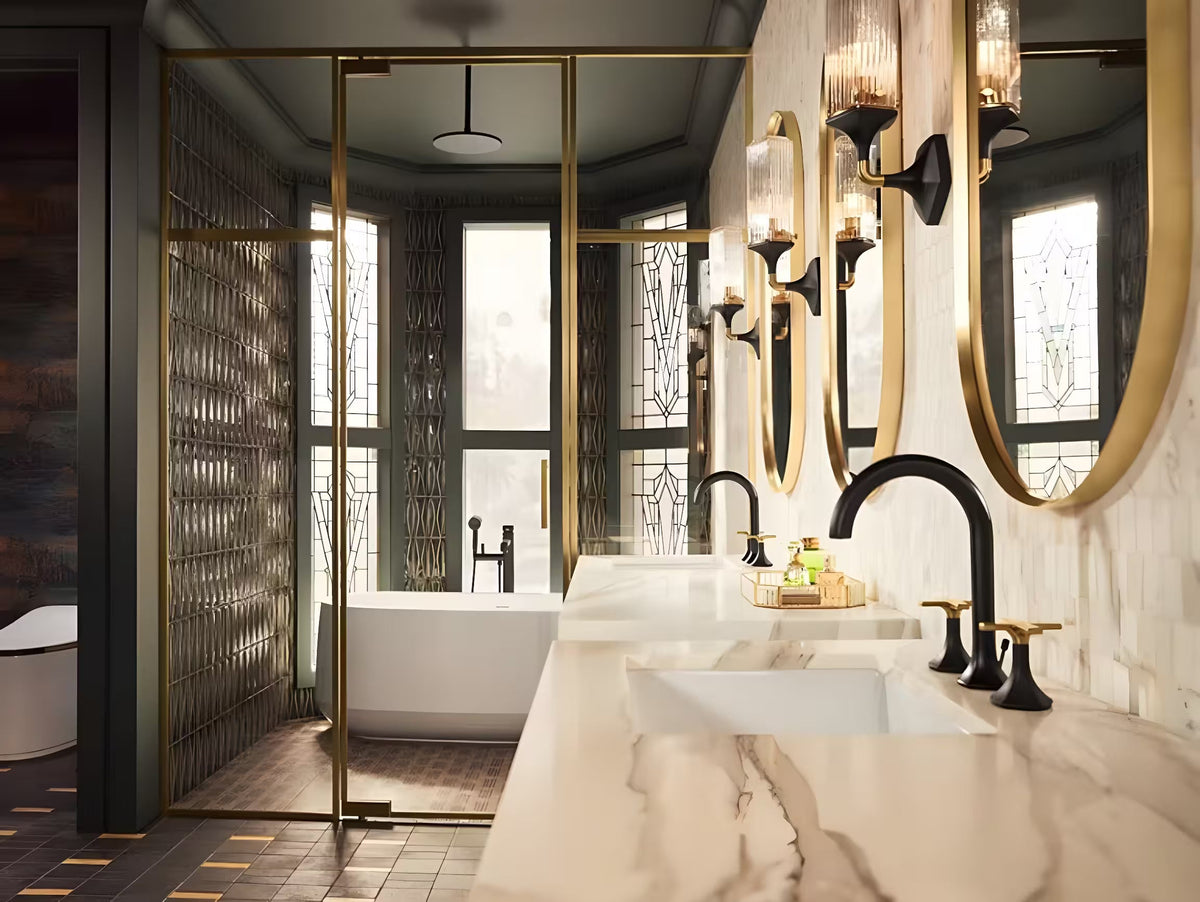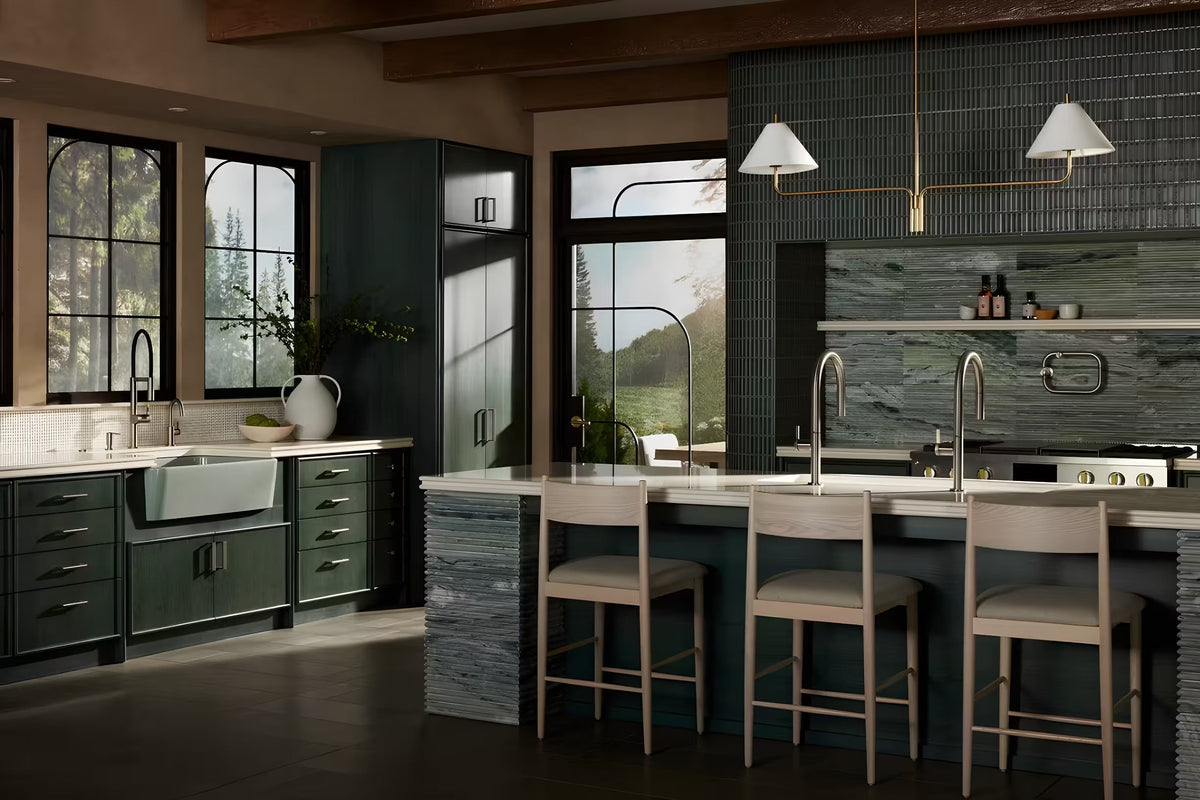Recessed lighting is one of those design elements that you may not notice at first, but once it's in place, it totally transforms a space. Whether you’re remodeling a room or simply upgrading your lighting fixtures, recessed lights can make your home feel more modern, spacious, and stylish. But what exactly is recessed lighting, and how can you use it to improve your space? In this article, we’ll explore everything you need to know about recessed lighting, from its definition to its benefits and installation. Let’s get started!
What Exactly Is Recessed Lighting?
Recessed lighting, also known as "can lights" or "pot lights," is a type of light fixture that’s installed into the ceiling. Unlike surface-mounted lights that hang down from the ceiling, recessed lights are set inside the ceiling, creating a sleek, minimalist look. The only visible part of the fixture is the trim or bezel, which is the small rim that surrounds the light.
These lights come in different shapes, sizes, and finishes, allowing for a wide range of design options. When installed correctly, recessed lighting provides an even, focused light source that’s perfect for both ambient and task lighting.
How Recessed Lighting Works
So, how do recessed lights work? It’s pretty simple—recessed lights consist of three main components: the housing, the trim, and the bulb.
- Housing: This is the part that gets installed inside the ceiling. It holds all the wiring and connects the fixture to the electrical circuit. The housing also controls the direction and quality of the light.
- Trim: The trim is the visible part of the fixture that sits flush with the ceiling. It often comes in different finishes, like chrome, white, or matte black, and can be chosen to match your room’s decor.
- Bulb: Recessed lighting can use various types of bulbs, such as halogen, incandescent, or LED, depending on your preference for light intensity and energy efficiency.
When installed correctly, recessed lights blend seamlessly into the ceiling, providing a clean, modern look. The light can either shine downward for general illumination or be angled to focus on specific areas (like artwork or a kitchen countertop).
Types of Recessed Lighting
Not all recessed lights are the same. There are a few key variations depending on the installation method and design.
New Construction vs. Retrofit Recessed Lights
- New Construction: These are ideal if you’re building or remodeling a home. They’re installed during the initial construction phase and require a bit of work, including cutting into the ceiling and running wires.
- Retrofit: If you want to add recessed lighting to an existing room without doing major renovations, retrofit recessed lighting is the way to go. These fixtures are designed to be installed into a ceiling that already exists, making them an excellent choice for quick upgrades.
Benefits of Recessed Lighting
Why should you consider adding recessed lighting to your space? There are several advantages:
Space-Saving Design
Since recessed lighting is installed on the ceiling, it doesn’t take up any space in the room. This is especially beneficial in smaller rooms where you might not have the clearance for a bulky overhead fixture. Plus, it provides a more open, airy feel.
Energy Efficiency
Recessed lighting is often paired with energy-efficient LED bulbs, which can save you a significant amount on your electricity bills. LED bulbs use far less energy than traditional incandescent bulbs, making recessed lights a sustainable option for homeowners.
Common Uses for Recessed Lighting
Recessed lighting isn’t just a one-size-fits-all solution. There are many ways to use it in different parts of your home, depending on the effect you’re going for.
Living Rooms and Bedrooms
In living rooms and bedrooms, recessed lighting can create a subtle, ambient light that doesn’t overpower the space. It’s a great way to enhance the atmosphere without drawing attention to the light fixtures themselves. You can also use adjustable recessed lights to highlight specific areas like artwork or architectural features.
Kitchens and Bathrooms
Recessed lighting is especially popular in kitchens and bathrooms, where focused task lighting is important. In kitchens, you can install recessed lights over countertops, sinks, and cooking areas for optimal visibility. In bathrooms, recessed lighting can provide excellent, even illumination without cluttering the space.
Choosing the Right Recessed Lighting for Your Space
Selecting the right recessed lighting involves more than just picking out a fixture. You’ll need to consider the size of the room, the lighting effect you want, and the type of bulbs you plan to use.
Consider the Size of the Room
The size of the room plays a significant role in determining the number and placement of recessed lights. In larger rooms, you may need more fixtures spaced further apart, while smaller rooms require fewer lights. You’ll also want to ensure the lights are positioned to cover the room evenly.
Lighting Styles and Effects
Do you want a room that’s brightly lit or more subtly illuminated? Recessed lighting can serve both purposes, depending on the type of bulbs you choose and the direction of the light. For example, using adjustable recessed lights can help you highlight a particular feature in the room, such as a painting or bookshelf.
How to Install Recessed Lighting
Installing recessed lighting isn’t a difficult task, but it does require some electrical knowledge and tools. If you’re comfortable working with electricity, you can install recessed lights yourself. However, if you’re unsure, it’s best to hire a professional electrician.
To install recessed lighting, you’ll need to:
- Turn off the power at the circuit breaker.
- Choose the locations for your lights.
- Cut holes in the ceiling for the fixtures.
- Run the necessary wiring from your power source to the fixture locations.
- Install the housing, trim, and bulb.
Tips for Maintaining Recessed Lighting
Recessed lighting is generally low-maintenance, but there are a few things to keep in mind:
- Clean the trims regularly to avoid dust buildup.
- Check the bulbs occasionally to ensure they’re working properly and replace them when needed.
- Avoid covering the fixtures with insulation or materials that could obstruct airflow.
Common Mistakes to Avoid with Recessed Lighting
While installing recessed lighting is relatively simple, there are a few common mistakes people make. Here’s what to watch out for:
- Incorrect spacing: Too many lights or too few lights can create uneven lighting. Make sure to plan the layout carefully.
- Not using the correct bulbs: Be mindful of wattage and brightness to avoid overpowering the room.
- Failure to plan for electrical load: Make sure your circuit can handle the load if you're adding multiple recessed lights.
Recessed lighting is a modern, sleek solution that can enhance any room in your home. Whether you’re looking for ambient light, task lighting, or a combination of both, recessed lighting provides the flexibility you need. With its space-saving design, energy efficiency, and versatility, it’s no wonder this lighting style is so popular.
FAQs
1. Is recessed lighting suitable for all types of ceilings?
Yes, recessed lighting can be installed in most ceiling types, including drywall, plaster, and even some drop ceilings.
2. Can I install recessed lighting in a finished ceiling?
Yes! Retrofit recessed lights are designed specifically for this purpose and can be installed without major modifications to the ceiling.
3. How far apart should recessed lights be spaced?
A general rule is to space recessed lights 4–6 feet apart, but this will depend on the size of the room and the effect you want to achieve.
4. What types of bulbs should I use for recessed lighting?
LED bulbs are the most energy-efficient option, and they come in a variety of color temperatures to suit your needs.
5. How can I make my recessed lighting more energy-efficient?
Using LED bulbs, dimmer switches, and ensuring proper insulation around the housing can make your recessed lighting more energy-efficient.











